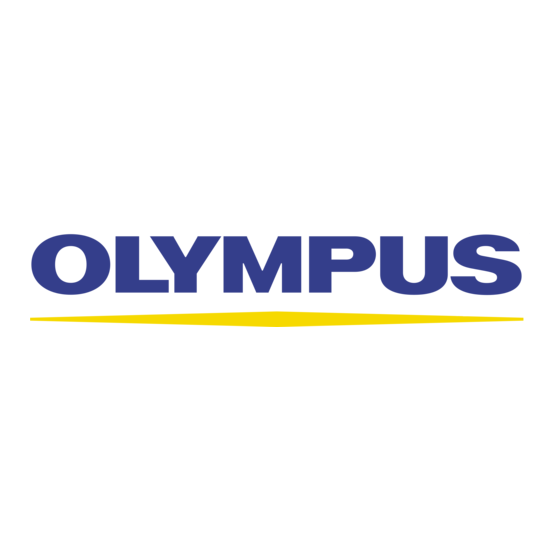Olympus Fluoview-1000 Manuale d'uso - Pagina 48
Sfoglia online o scarica il pdf Manuale d'uso per Microscope Olympus Fluoview-1000. Olympus Fluoview-1000 50.

V.M. Bloedel Hearing Research Center, Core for Communication Research
Center on Human Development and Disability, Digital Microscopy Center
Technical Information
9.
9.1
Caring for Objectives
1. Check the turret before placing your sample in the holder or activating the Multi-Area
TimeLapse module.
a. If the lens appears to extend above the level where your specimen will be positioned then
you must lower the objective lens with the focus knob.
2. If a specimen has been viewed with an oil immersion objective, THE 20X OBJECTIVE
CANNOT BE USED until ALL oil has been removed from the specimen.
3. Remove immersion oil from the objectives after each imaging session
a. Wick the oil from the glass lens with a sheet of lens paper folded double
b. Wipe all of the oil from the metal nose of the objective using a Kimwipe
c. Gently blot the lens with filter paper again.
d. Inspect for, and wipe away, any oil running down the side of the objective.
4. Remove immersion oil from your specimen as soon as possible
a. Gently wipe specimen with a Kimwipe then clean with 95% ethanol
5. When changing objectives (special operation with training required), insert and remove
objectives after removing the stage insert and tilting the condenser back to get clearance.
6. Always lower the objective turret when changing samples.
7. Use high-viscosity immersion oil (>1200 centistokes, e.g. Cargille Type B) for the least spread
of oil.
8. Do not over-oil immersion objectives, use the minimum amount of oil necessary.
a. Scrunchies have been wrapped around the oil immersion objectives to absorb accidents
9. It is not necessary to rub the glass or to get it completely oil-free, a thin film of oil is acceptably
clean.
10. DO NOT MIX IMMERSION OILS FROM DIFFERENT BRANDS!!!! This can create
refractive index gradients that affect the image or cause chemical reactions that create serious
problems.
11. Report all objective problems immediately!
9.2
FV-1000 Optical Specifications
This table shows the filters and beamsplitters used as dyes are selected. The excitation dichroics reflect
the laser lines to the scanhead and allow the emissions to pass into the detectors. There are dichroic
mirrors for the first 3 channels to direct emissions into the detectors. The 4
so that any signal passing through the preceding dichroics will be directed to the PMT. Channels 3 and
4 use standard barrier filters to limit the range of wavelengths reaching the detector. Channels 1 and 2
each use a diffraction grating with an adjustable slit to control the range of wavelengths allowed to reach
the PMT.
May 11, 2011
Olympus Fluoview-1000 User's Guide
48
th
channel has a fixed mirror
